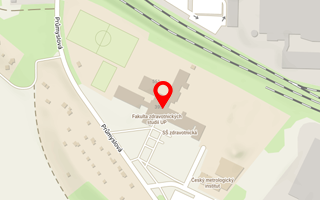The centre provides patient care and is active in its scientific research activities.
The sensation of environmental substances is provided by the sense of smell, taste, and sensation of the trigeminal nerve or trigeminus. All three systems, i.e. the sense of smell, taste and trigeminus, work closely together, especially when consuming food.
The sense of smell is used to detect smells or odours present in the environment. The function of the sense of smell is related to food intake. Odorous substances reach the olfactory mucosa not only through the nasal passages but also from the mouth and pharynx through the nasopharynx into the nasal cavity. The sense of smell plays a vital role in detecting hazards from the external environment (gas leaks, fire, spoiled food). Last but not least, the sense of smell is involved in social communication. Taste distinguishes between sweet, salty, bitter, sour and umami. The trigeminal nerve recognises texture (whether food is smooth or rough) and whether it contains an irritant or a pungent ingredient (e.g., chilli).
Olfactory and taste disorders are associated with many diseases. Deterioration of olfactory function can be caused by diseases of the nose and sinuses, viral diseases (including COVID-19), conditions following head trauma, and, for example, neurological diseases (Parkinson's disease).
Taste disturbances can occur in kidney or liver disease, during radiotherapy (radiation to the head and neck area). They can also be associated with side effects of medicines. Taste perception is significantly influenced by the composition of the diet. Patients with high blood pressure have been shown to have a lower sensitivity to salt. Patients with diabetes have been shown to have impaired taste, especially for sweet.
COVID affects mainly the sense of smell, and in some patients also the sense of taste.

